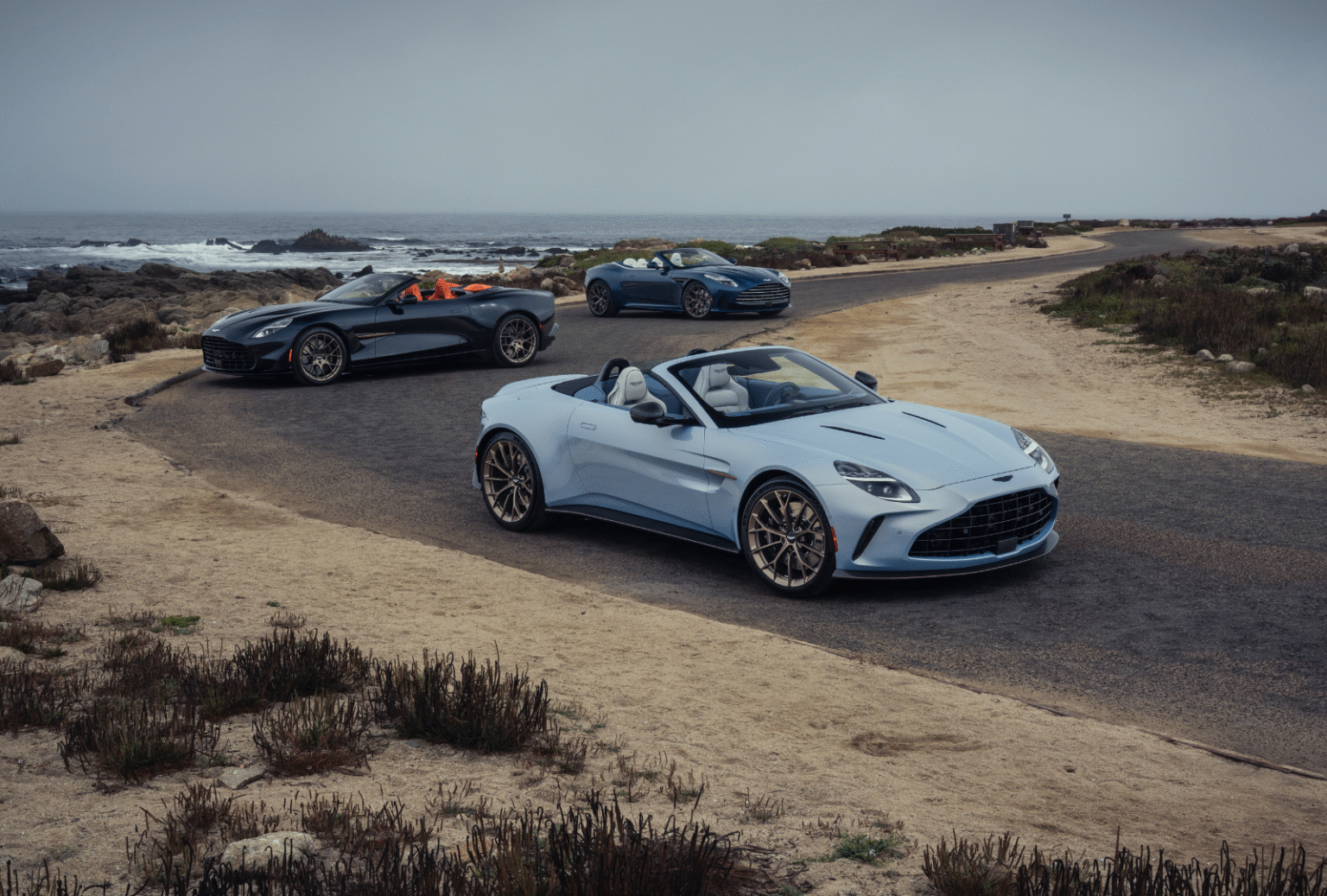Aston Martin has a catalogue of a century’s worth of iconic car designs. Marek Reichman, the company’s chief creative officer, is responsible for many of the heralded models in the last two decades, including the DBS, Vulcan, Vanquish and DB10.
During his tenure, he has worked to grow the company’s lineup, which now includes an SUV alongside sports cars, a grand tourer and motorsports models. Those are divided into two sets, he told Newsweek: those that are evolutions and those that are revolutions.
“Evolution is hard for someone to track, because evolution can go this way, this way or this way. Revolution is even harder to track,” Reichman told Newsweek during The Quail, A Motorsports Gathering.
Pointing to the DBX707 SUV on the company’s display, he said: “When this came out, it was revolution for us.” Motioning toward the DB12 and Vanquish parked nearby, Reichman remarked, “These are evolution.”
There is a level of importance for revolutionary new vehicles, the designer explained. “If we continue to have revolution, then we will always be catching the onlookers,” he said.
Car designers start planning models nearly a decade before they reach customers. The trends of today are likely not to be the trends of tomorrow. Reichman posited: “How do you keep relevant and beyond trend?”
Then he answered, saying, “I think sometimes you have to set trends yourself. You have to not follow the norm. You have to not look at the research and say, well, x, y and z means [this], we should do this. No, go backwards or go upwards or go down. Do something different, don’t be expected, and people will follow you if you’re confident in your brand. You get a follower, you get a fan base, you get a consumer base, because you’re doing things differently.”
Recent designs out of Reichman’s studio have strengthened the brand’s revolutionary design take. “No one expected a Valkyrie,” Reichman explained.
When it came time to develop Aston’s Valhalla supercar, as the designer tells it, journalists wrote about the coming car and what they assumed it looked like. “Actually, it looks like that,” he said, pointing toward the car, which features a sharp wing and unique front end.
When the company was working on its DBX, Reichman and team purposefully deceived brand followers. “The concept car and this car were quite far apart,” he said, explaining that many vehicles are shown very close to production looks in concept form, but that Aston didn’t do that.
“That concept was a deliberate attempt to mask. It was partly masking, partly an invitation to consumers to say what we are thinking of, not thinking [about what it] will be and [asking them], ‘What is your reaction?'” Reichman said. Doing that allowed the company to listen to customer feedback and adapt the vehicle accordingly.
The method works. Aston Martin has sold around 14,000 DBXs to date.
“Customers react to things that are different and new, because they are simply different than you. Over time, they go the other way. Nobody likes change. Everyone asks for change, but nobody likes change. And when you do change, people say, ‘Oh, why have you changed?’ When all of a sudden they accept that you changed,” Reichman said.
“I think it’s really important to understand your brand and do what your brand needs to do in the marketplace. And the consumer will look at it and say, that’s an Aston Martin. But, there’s always a challenge of weighing what a consumer wants. It’s fresh versus the heritage of Aston.”
Read the full article here

